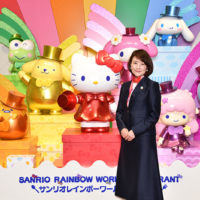Last week, NHK ran a story on a "Showa Lifestyle" exhibition at a shopping center in Mito, a city two hours northeast of Tokyo. The exhibit wasn't aimed at baby-boomers — Showa refers to the historical period from 1926-1989 — but rather their children and grandchildren.
The Mito City Museum, which put on the event, set up a mock living room circa the 1960s. Here kids could experience sitting at a low table on floor cushions, turning the dials on a black-and-white TV, many of them likely for the first time. They could also see what it was like to use an old rotary phone, a foot-pedal sewing machine and even a few pairs of take-uma, bamboo stilts, a popular amusement from an era of few luxuries.
For kids weaned on mobile phones, there may be no greater novelty than the past. They can also get an inkling of how different their world is from that of previous generations.

















With your current subscription plan you can comment on stories. However, before writing your first comment, please create a display name in the Profile section of your subscriber account page.